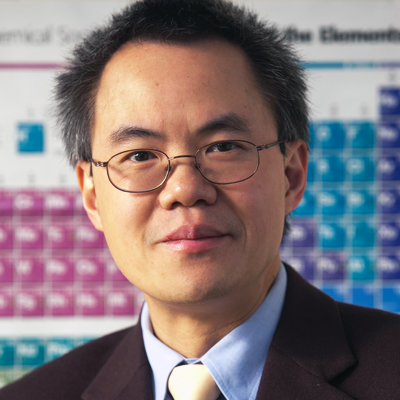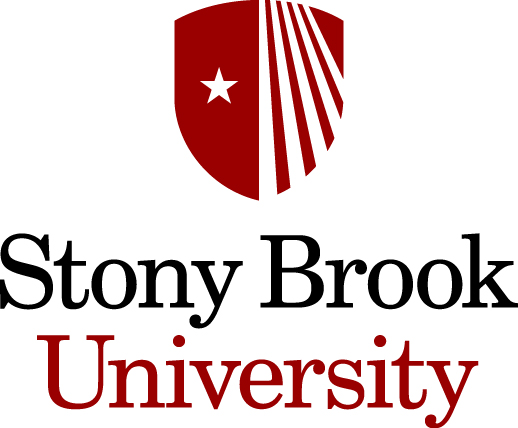Innovations that will yield unprecedented impacts on future applications
Materials that we completely understand at the visual macroscale are often completely different when we look at them on the scale of nanometers. Typical behaviors, such as but not limited to electrical, optical, and magnetic phenomena, are often unrecognizably distinctive within a nanomaterial. Therefore, it is an opportune time to discover and gather as much information and observations about these interesting and exciting materials created at the nanoscale. Dr. Stanislaus Wong, of the State University of New York and Brookhaven National Lab, works to innovate and develop themes and trends that impact nanoscience. Through his work, Dr. Wong believes he can “create something enduring and lasting, something positive and constructive, that might possibly transcend the vagaries of time.” By methodically making and systematically studying the properties of novel nanomaterials, he and his team are building up the foundation and intellectual underpinnings of nanoscience itself. As an academic lab, focused on basic research, Dr. Wong and his team also have contributed to the development of unique and distinctive materials, what Dr. Wong coins their “toolkit,” that can be applied to useful commercialized products for future practical applications.
Through Dr. Wong’s strategy of focusing on creating new types and classes of nanomaterials through rational and thoughtful chemistry, he and his lab hope to tailor properties of any material that they can fabricate and synthesize, giving them an unprecedented potential to design and introduce particularly desirable functions and properties. Therefore, by understanding the underlying chemical process and efficiently characterizing the products of that process, the impact of these nanomaterials may be revolutionary. In this sense, Dr. Wong’s research has the potential to impact the progress of many disparate fields ranging from biology, chemistry, physics, to engineering. Moreover, because Dr. Wong’s research is vertically integrated, his group members are able to take ownership over a project from the initial synthesis to its eventual structural and property characterization. Thus, with the combination of passion, technical expertise, and incredible collaboration that links diverse fields, Dr. Wong’s quest seeks to create consequential innovation that will allow for longer, healthier, and more fulfilling lives!
Current research includes:
-
Designing Materials: Dr. Wong is interested in how to fundamentally design a material that has a very specific set of properties. He and his team work to tune and integrate desirable properties into new materials. That is, in theory, he and his team are able to deliberately design better and higher performing components for a host of wide-ranging, potential applications including but not limited to solar cells, fuel cells, energy storage, catalysts, nano-medical instrumentation, gas storage media, and molecular wires for the next generation of electronics devices.
-
Designing Devices: Dr. Wong’s lab works to design specific devices that endow new and interesting nanomaterials with unique combinations of properties and functionalities, that have never before been combined into one discrete unit. For example, his research has led to the development of nanoscale platforms for drug delivery inside cancer cells that leaves healthy cells unscathed. Additional projects relying upon the same principles are unlimited in potential.
-
Sustainable Chemistry: Dr Wong’s lab consciously works towards green, sustainable chemistry through the deliberate effort to abide by guidelines that are generally atom economical and benign to the human health and environment in their synthesis of functional nanostructures.
Bio
Stanislaus S. Wong earned his Ph.D. from Harvard University in 1999 under the tutelage of Professor Charles M. Lieber. After completing a postdoctoral fellowship at Columbia University with Professor Louis E. Brus, he is currently a full Professor of Chemistry at SUNY Stony Brook with a joint appointment at Brookhaven National Laboratory. Professor Wong has been a member of the Editorial Advisory Boards of both Chemistry of Materials and of ACS Applied Materials and Interfaces, served as the section editor of the ‘Materials: synthesis and self-assembly’ section of Nanotechnology, and is currently Associate Editor of ACS Applied Materials and Interfaces. Professor Wong was elected in 2012 as an American Association for the Advancement of Science (AAAS) Fellow for work on the covalent surface chemistry of carbon nanotubes as well as on the synthesis, characterization, and applications of non-carbonaceous nanostructures. He and his group are especially interested in developing nanomaterials for energy applications.
Dr. Wong is a passionate student of history, and coupled with his own personal experience, he recognizes that the past must be viewed as a starting point to build and improve upon, in order to move beyond its lessons and limitations. Hence, what motivates and drives him towards research is to make the world a better place for having entered it.
Research in Dr. Wong’s view therefore represents an opportunity to develop impactful and beneficent studies that can potentially make a difference, both (i) short-term in the context of directing, guiding, and improving the lives of his team members working on these projects, and (ii) long-term in the context of adding a few more useful building blocks towards strengthening the intellectual edifice of Knowledge.
In his free time, aside from research, Dr. Wong enjoys delving into the intricacies of Romance languages, world history, Renaissance art, and classical music, which represent alternative and fascinating ‘ways of seeing’ the universe, and provide for insights into the principles that create meaning and understanding.
Website: http://www.stonybrook.edu/commcms/chemistry/faculty/wong.stanislaus.html
In the News
Publications
Videos
Awards
Inorganic Nanoscience Award (American Chemical Society), 2015
Faculty Honor Wall honoree (SUNY Stony Brook), 2013
Election as American Association for the Advancement of Science (AAAS) Fellow, 2012
Buck-Whitney Award (Eastern New York ACS Section), 2009
Alfred P. Sloan Foundation Research Fellowship, 2006-2008
CAREER Award, 2004-2008
for “Rational Synthesis and Studies of Functionalized Carbon Nanotubes” (National Science Foundation)
Patents
U.S. Patent No. 8,721,923: “Metal Sulfide and Rare Earth Phosphate Nanostructures and Methods of Making Same."
Inventors: Stanislaus S. Wong and Fen Zhang. Issued May 13, 2014.
U.S. Patent No. 8,440,162 B1: "Titanate and Titania Nanostructures and Nanostructure Assemblies, and Methods of Making the Same."
Inventors: Stanislaus S. Wong and Yuanbing Mao. Issued May 14, 2013.
U.S. Patent No. 8,318,126 B2: “Methods of making binary metal oxide nanostructures and methods of controlling morphology of same.”
Inventors: Stanislaus S. Wong and Hongjun Zhou. Issued November 27, 2012.
U.S. Patent No. 8,137,652 B2: "Sidewall-Functionalized Carbon Nanotubes, and Methods for Making the Same."
Inventors: Stanislaus S. Wong and Sarbajit Banerjee, divisional patent based on U.S. patent #7,122,165. Issued March 20, 2012.
U.S. Patent No. 7,883,504: "Silylated Carbon Nanotubes and Methods of Making the Same.”
Inventors: Stanislaus S. Wong and Tirandai Hemraj-Benny. Issued November 16, 2010.


